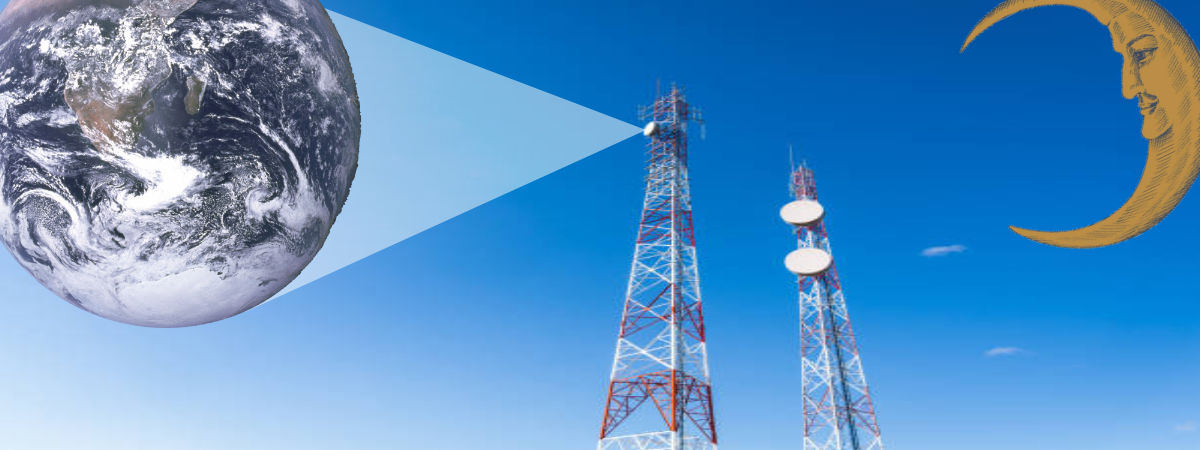A few days ago, the Wall Street Journal published an article about a website (as well as an app for both iOS and Android devices) called Radio.Garden. The creators and staff are based in Amsterdam, the Netherlands, and the service provides access to 40,000 radio stations around the world. These stations provide feeds so that anyone with an internet connection can listen to their programming. It’s a fantastic way to explore the diversity of aural content around the world, including from places that most of us couldn’t or wouldn’t travel to (looking at you, Mogadishu, Somalia).
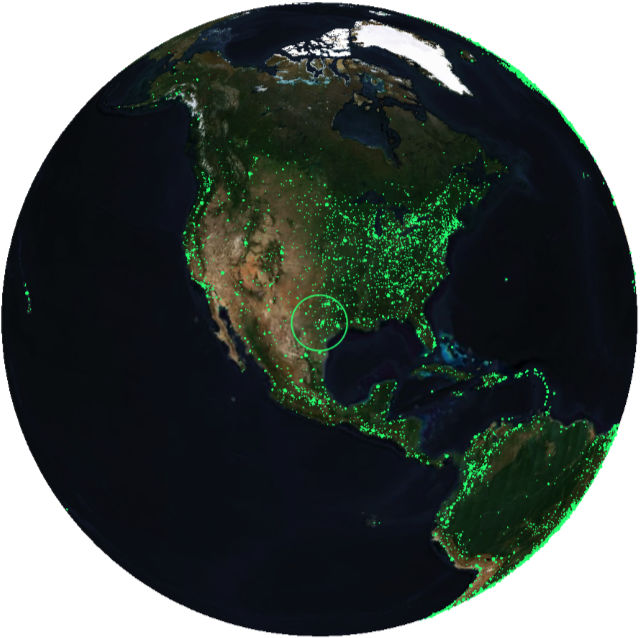
Navigation of the site is drop-dead simple…sort of. When you first visit the website, it will zoom into either your current location (if you’re using the app on a phone or tablet) or the location of your internet provider (if you’re using the website). A small navigation/information popup will appear in the lower left corner of the main window. You can start and stop the audio and control the volume in that area:
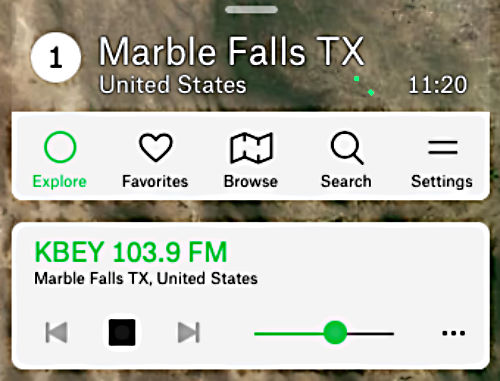
From that same popup you can search by country, city, or specific radio station; it will keep a history of your recent searches, or if you clear that history, it will show stations that it has identified as “Popular Across the Globe,” presumably based on searches although that’s just a guess:
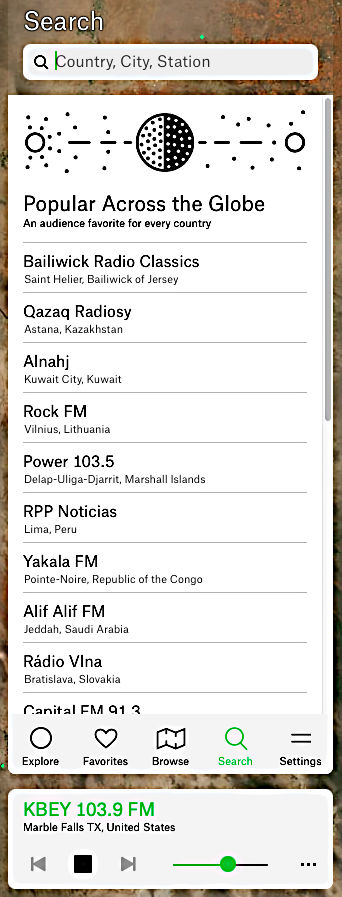
The “Settings” section provides information about Radio Garden itself — the staff, history, and technology employed by the service. You’ll learn that the platform launched in 2016 and it has been actively developed, expanded, and improved since then. You’ll even learn what font the site uses.
The Settings section provides a way to submit a radio station for inclusion in the service[1]. You can also fiddle with some options that tweak the user interface.
You might be tempted to explore the stations close to your location but the real fun begins when you start twirling the globe to see where you land, and hear what the folks on the ground there might be listening to. This is where the concept of cartophony[2] comes into play.
Exploring the global radio population will challenge your knowledge of geography given that there are no geopolitical boundaries shown on the globe…just unlabeled continental masses.
For most of you, it’s easy enough to recognize general regions of the United States, and you can probably even narrow things down to specific states or even cities based on the size of the dots that represent stations or groups of stations (the bigger the dot, the more stations that are represented). But until you actually click on a dot, which then zooms into the specific station, you won’t know for sure how accurate your guess is.
Once you click on a station, the popup will show the station name, highlighted either in green (internet stream is active) or red (you can guess what that means), and if green, the content will begin to play. The popup will also show all the other stations in the specific location you’ve landed on, as well as a list of popular stations in the general area. Here’s the popup for Auckland, New Zealand:
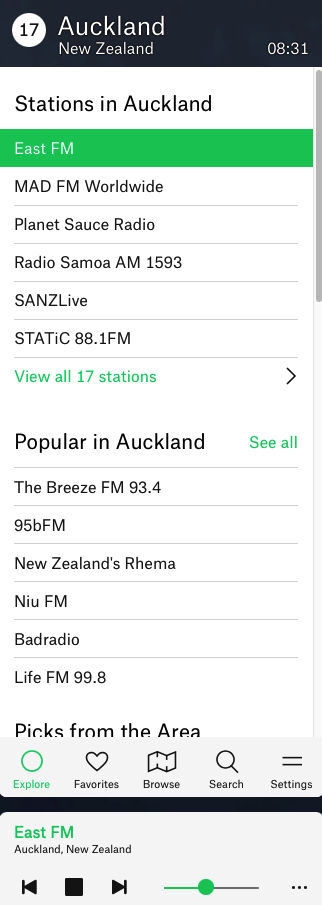
And all bets are off — for me, at least — once I spin away from the good ol’ USofA and land somewhere in, say, southeast Asia, or even mainland Europe…let alone the interior of Africa. This is where I’m geographically-challenged without being able to see country borders. But this is also where serendipity comes into play, and you begin to experience the diversity I mentioned above.
On the other hand, you also may find that global musical preferences are less diverse than you think, and while one might argue that global American influence is waning in many categories, it’s still dominant when it comes to music. The songs may not be sung by American artists, but the lyrics are in English and they hew closely to the pop and rock (and even country) styles that you can find in every major market in the US. I found that to be the case in Kyiv, Ukraine (Hit FM Best, playing English language German and Irish pop); Moscow, Russia (101.RU playing metal from Skillet and punk from Rise Against); hip-hop and electronica with English lyrics from Mumbai, India (Radio City Hiphop and Radio City Electronica, respectively); progressive jazz — yeah, we invented it — from FM90.9 in Taipei and AshiyaRadio in Ashiya, Japan, and [uncensored] rap from WREP Live in Tokyo; R&B in Kampala, Uganda, via Radio One FM 90.0 and Radio Phoenix FM 89.5 in Lusaka, Zambia; mainstream pop from Cape Town, South Africa via eRadio SA; and Purple Rain (Prince) on Radio Sol FM 97.7 in San Antonio de Arco, Argentina.
One deficiency — well, it’s more of an inconvenience — is that the platform doesn’t identify the music that plays. That’s not surprising, given that many or most of the internet feeds aren’t supplying that information to begin with. That’s where apps such as Shazam and SoundHound become valuable in identifying the musicians and the songs…and their international music databases are more robust than you might imagine.
Despite the apparent ubiquity of English language songs, Radio Garden is a rich resource for anyone who values so-called world music…indigenous artists singing in their native languages, and playing the styles for which their countries are best-known (e.g. Bollywood extravaganzas in India; shamisen-centric songs in Japan; Mexican folklorico; reggae in Jamaica; etc. There’s something very cool about listening to traditional country (as in “We got both kinds…country AND western”[3]) music being played by the Wolverines on a station located in Nhulunbuy, in the Northern Territory of Australia, a bunch of miles from anywhere.
It’s also a terrific way to relive some of your travels via the local stations that you may or may not have listened to on your journeys, but which may reanimate memories of being there. For me, that includes cities and towns like Tegucigalpa and San Pedro Sula, Honduras; Kralendijk, Bonaire; Cockburn Town, Turks & Caicos; The Bottom, Saba; Charleston, South Carolina; Frisco, Colorado; Casper, Wyoming; San Diego, California; Kahului, Maui, Hawaii. Oh, and Marble Falls, Texas…seems like just yesterday that I was there.
As a former radio DJ (see below) and also as a former cartographer (aka Geographic Information Specialist), Radio Garden meshes well with two of my interests. Regardless of whether you can claim either of those occupations (or even areas of interest), I think you’ll find it’s a pretty good way to wander around the world. Give it a try and let me know what you think.
Footnotes of, uh, Note
[1] I attempted to submit KFST AM/FM, located in my hometown of Fort Stockton, Texas, a nostalgic favorite where I worked as a DJ for a couple of years as a college student. I was unsuccessful because the station’s internet feed never came online. Bummer. Of course, when I worked there, the concept of an internet feed was science fiction. At the time, the station was AM only, broadcasting sunup to sundown. Today, it’s a 250-watt AM station and a 3,000-watt FM station, both 24-hour programming, but neither broadcast signal goes further than about 100 miles. This gives it a potential listening audience of more than 400,000 people, according to this website; I find that estimate to be dubious in the extreme and I suspect the actual number is less than 10% of that. KFST does have its own Wikipedia page, which suffers from a regrettable lack of mention of my tenure at the station. [Return]
[2] I have to give credit to ChatGPT for coming up with the term, which is sort of a portmanteau of cartography and the suffix, phony, which refers to the subject of sound (and not the chestal region of certain actresses, at least not in this specific usage). The term seems particularly relevant to Radio Garden given its literal global interface that leads to literal sonic content. [Return]
[3] I don’t really have to tell you that that quote is from The Blues Brothers movie, do I? But, tbh, there is a legitimate debate about the distinction between the two…well, let’s call them sub-genres…although the distinction has blurred over time, and even the definitions of each have changed significantly. [Return]
Discover more from The Fire Ant Gazette
Subscribe to get the latest posts sent to your email.

